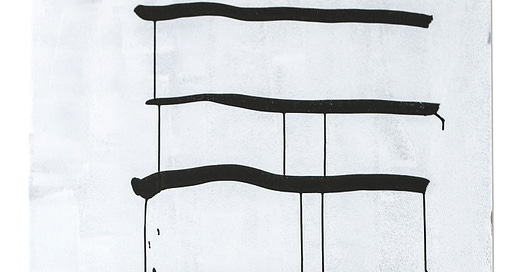“I don’t think there is such a thing as queer art unless it deals bleakly with sexuality, and then I would call it sexual art or erotic art. I don’t think that just because a person is gay and creates art, that queer art has been created.”
—Bruce Benderson
Among all the nonsites I’ve visited in my peregrinations across the mindways, there’s one I keep getting stuck inside of, a place that resists nominal assignations and normative grammar, an outside of the outside where I enjoy getting lost and losing what little sense of self I still possess in the multiple contradistinctions of being. A splattered form of being… Being open to the world, I suppose, increases your chances of getting lost in it. This has to do with the body, with representation. With work, with projections of the self (selves) that fall outside of the figurative. And with feeling: how it feels to arrive without actually physically being there. For there is indeed, in spite of our vociferous objections, a near-universal consensus that such a thing as queer art does exist. And that assignation is nearly universally relegated to those works wherein a body manifests itself. Is represented, pictorially or in space. Oftentimes, in performance—one of the favored modes of work deemed queer—an actual physical body. And so my thinking around this issue began with a very simple, even naive question: why does queer = body? Which leads, of course, to much more complicated questions, such as what it is that actually constitutes a body. And, for someone like myself, whose primary medium is words, language: what might a writing, a language (be it visual or otherwise) of the body look like when that physical body is no longer (re)present(ed)? In what ways, through what possibilities, does queerness articulate itself in the allegedly “pure” cerebral realm of abstraction? (Put another way: In what ways is mind a body?) Because queer people do make abstract work—very often, as it turns out. This isn’t a theory; it’s not cohesive enough; I have no interest in assuming a position or defending it; rather, place this collection of thought-splatterings in the realm of poetics—the delineation of a certain sensibility that is not bound to any one particular time but whose resonances can perhaps be charted throughout the whole history of art, starting with that proto-Modernist moment when Wilhelm Worringer first articulated abstraction, not as a style but as a mode of intentionality in artistic creation.
Keep reading with a 7-day free trial
Subscribe to Travis Jeppesen to keep reading this post and get 7 days of free access to the full post archives.



